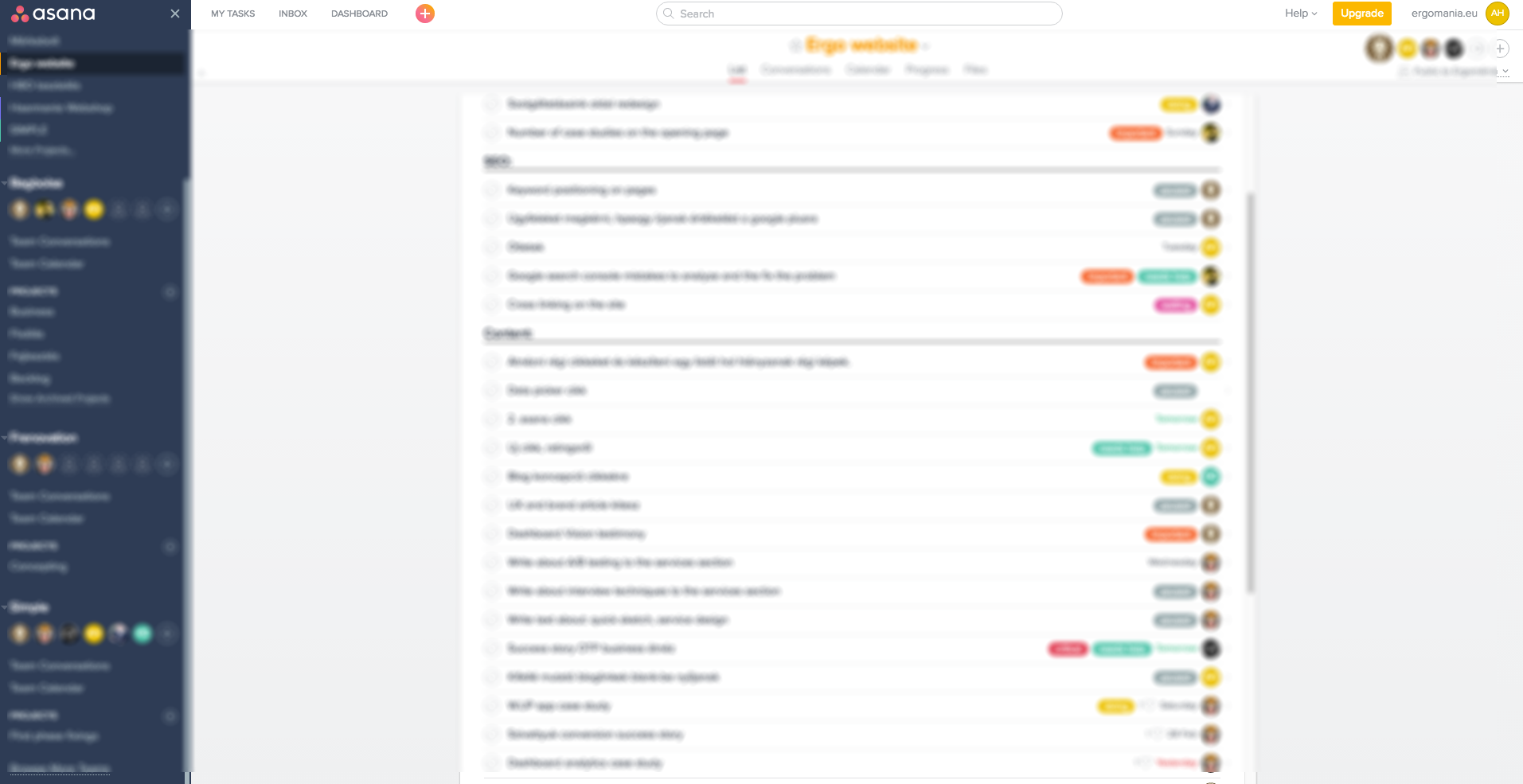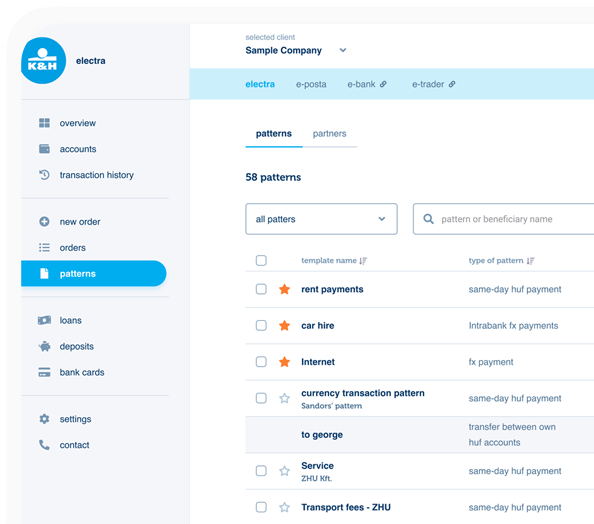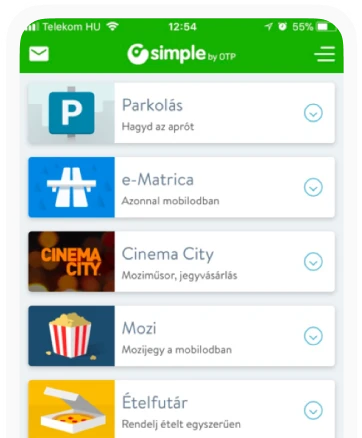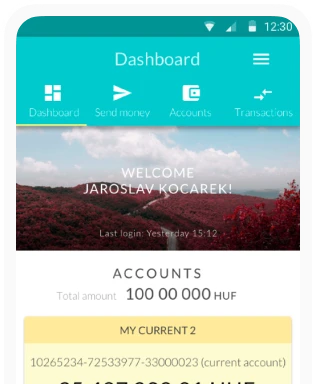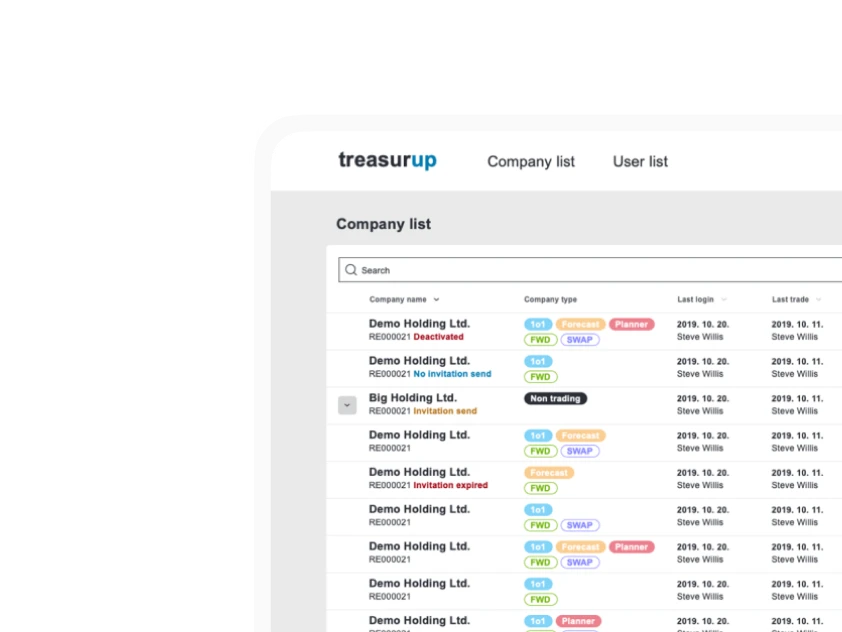What do we like about Asana?
We have been using Asana since 2013 to manage both UX and web development projects and to keep record and manage general company-related tasks. We are convinced that every company needs some sort of online project management tool, as projects cannot be efficiently managed using only emails and Excel sheets. To complement Asana, we use Slack for communication between staff members.
One of the biggest strengths of Asana is its user-friendly and uncluttered interface. Functional units are adequately distinguished from each another and the most important elements stand out visually. The dashboard boasts a logical and uncluttered structure, the sidebar on the left contains the created projects, while the centre of the screen shows the comments on the specific task.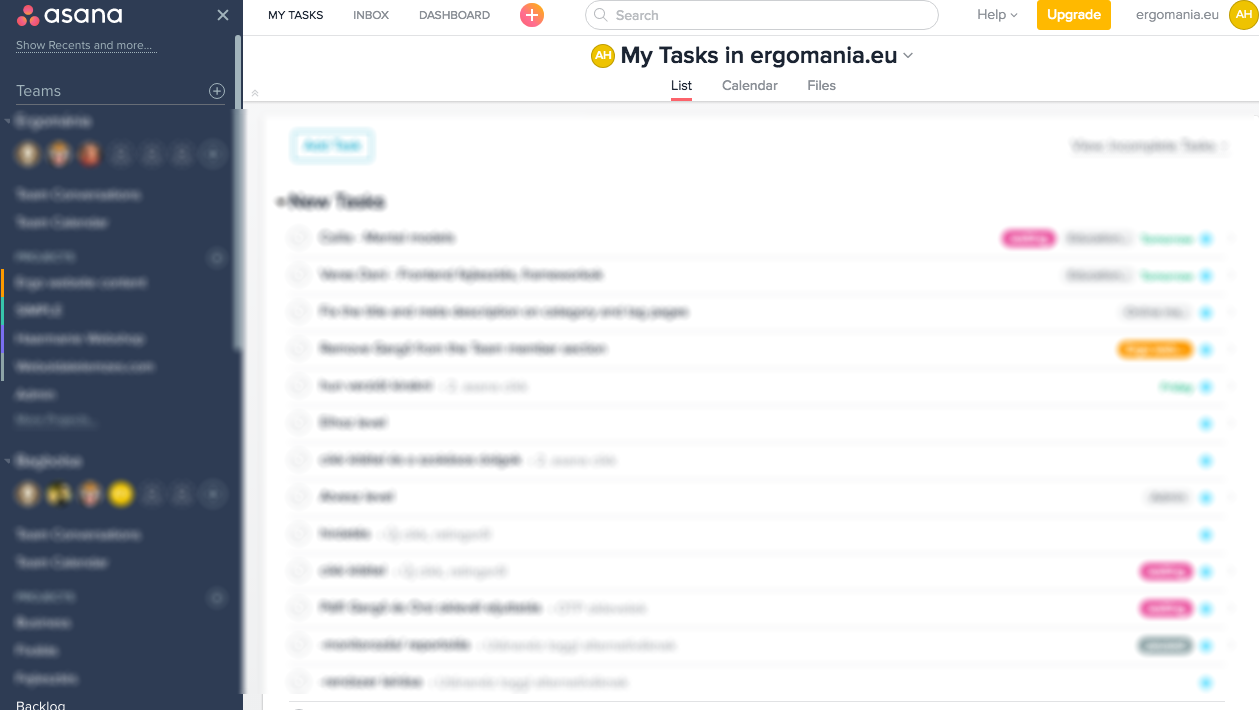 Asana dashboard
Asana dashboard
The interface is easy to learn, the visual elements (icons, typography, etc.) enable easy use of basic functions like adding new tasks, assigning a task to someone, etc.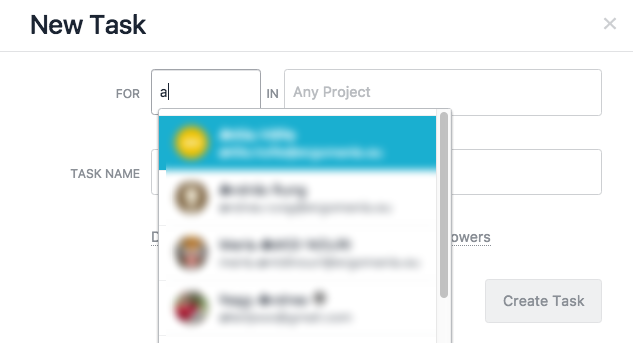 Adding a new task
Adding a new task
We can create separate projects on the dashboard, and can set up smaller thematic units called sections within each project (for example a web development project may include UX section, UI design section, a frontend section, a backend section, etc.) making complex structured projects with multiple tasks more transparent.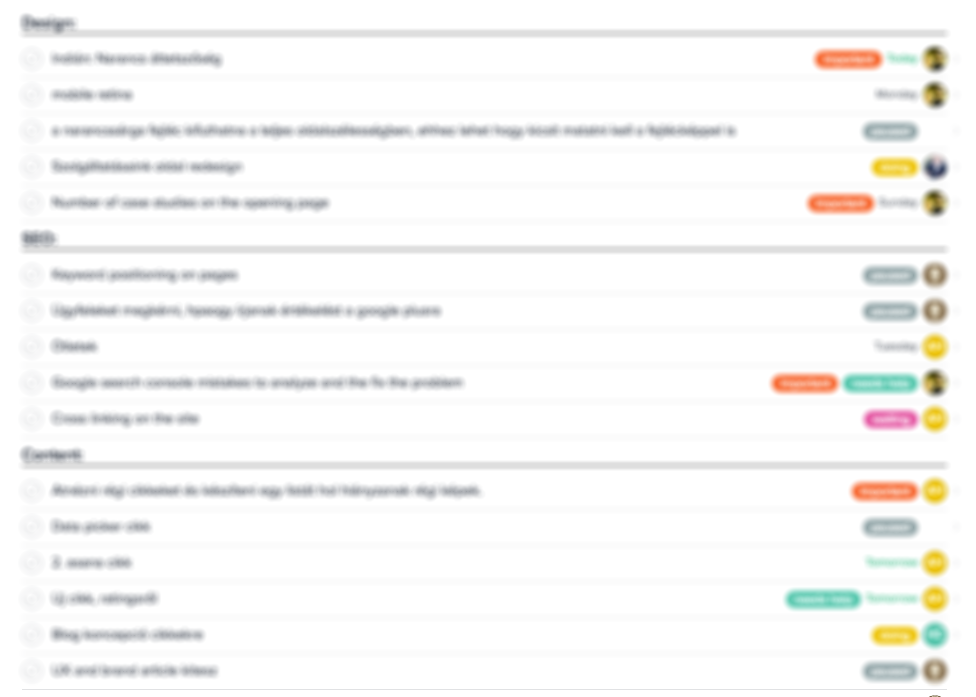 Sections within the project give an easier overview of tasks
Sections within the project give an easier overview of tasks
Tasks in progress and completed tasks can be filtered separately, a function we find very useful especially when we need to retrieve information on a completed task.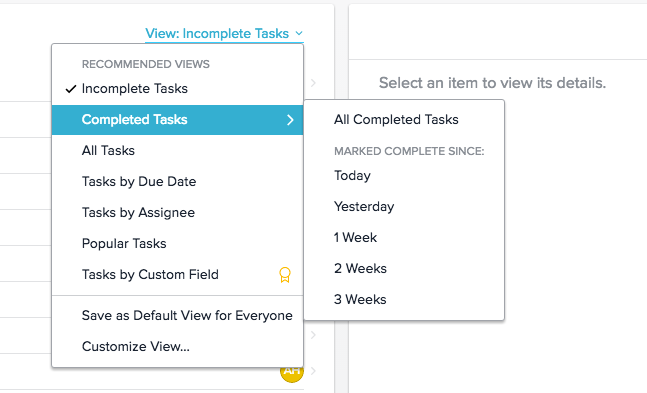 Tasks in progress and completed tasks can be filtered separately
Tasks in progress and completed tasks can be filtered separately
The information we regularly need during a project can be entered in the description section; typically for web development projects, this may include the availability of servers, login data, etc., so they do not have to be stored in a separate document and be easily retrieved at any time.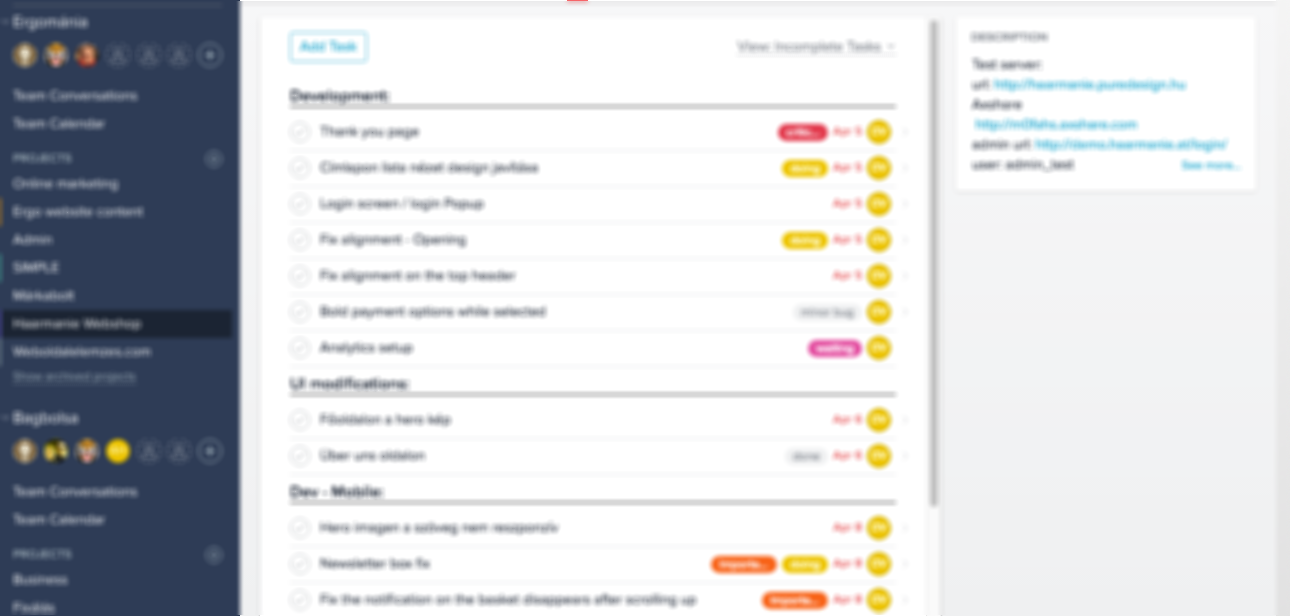 The information used regularly can be entered in the description section to allow easy retrievalTags (critical, important, needs help, etc.) help in categorising, prioritising tasks and providing a general overview, which not only give guidance for users, but also provide a visual aid to decide which tasks have priority.
The information used regularly can be entered in the description section to allow easy retrievalTags (critical, important, needs help, etc.) help in categorising, prioritising tasks and providing a general overview, which not only give guidance for users, but also provide a visual aid to decide which tasks have priority.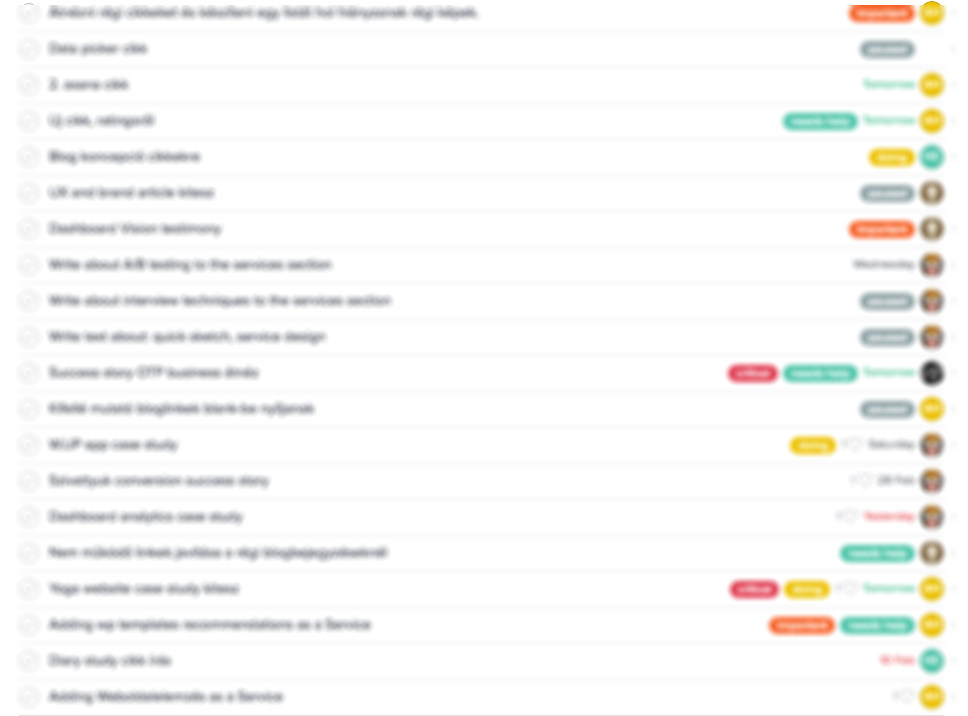 Tags help prioritise tasks
Tags help prioritise tasks
We can also track the status of a given project visually; we can easily query how many tasks have been completed and how many are still underway. The chart shows the number of completed tasks and the ones still underway, plus their distribution over time
The chart shows the number of completed tasks and the ones still underway, plus their distribution over time
An especially useful function of Asana is the Inbox view, where we receive notifications about the tasks assigned to us and the tasks that we are following.
This is the easiest way to review current events related to our tasks. We can also request email notifications about these and we can assign new tasks via Slack. Weekly tasks
Weekly tasks
We can set a single deadline for a task or define the task as recurring, which is useful for generating weekly reports. Not only a specific date can be set as the deadline, but also a specific hour within the day (e.g., 1 PM etc.).
If many people are working together on a task, a function we often use is the tagging of the person involved in a specific task (tagging) so that we can easily initiate dialogue about the completion of the task. This functionality makes it clear to the participants of the discussion who the comment is directed at, so the discussion is kept within boundaries as opposed to email. We also often use this functionality when we want to involve the client in Asana usage, making it clear to the client when we expect his/her cooperation or comment.
In Asana’s most recent release, instead of showing project components in a list, we use the board view, which was already available in other project management tools (e.g. Trello). The major benefit of this view is that it gives a superior visual overview and better navigation. Card-based layout for the sake of enhanced visual experience
Card-based layout for the sake of enhanced visual experience
One of the biggest strengths of Asana is its user-friendly and uncluttered interface. Functional units are adequately distinguished from each another and the most important elements stand out visually. The dashboard boasts a logical and uncluttered structure, the sidebar on the left contains the created projects, while the centre of the screen shows the comments on the specific task.
 Asana dashboard
Asana dashboardThe interface is easy to learn, the visual elements (icons, typography, etc.) enable easy use of basic functions like adding new tasks, assigning a task to someone, etc.
 Adding a new task
Adding a new taskWe can create separate projects on the dashboard, and can set up smaller thematic units called sections within each project (for example a web development project may include UX section, UI design section, a frontend section, a backend section, etc.) making complex structured projects with multiple tasks more transparent.
 Sections within the project give an easier overview of tasks
Sections within the project give an easier overview of tasksTasks in progress and completed tasks can be filtered separately, a function we find very useful especially when we need to retrieve information on a completed task.
 Tasks in progress and completed tasks can be filtered separately
Tasks in progress and completed tasks can be filtered separatelyThe information we regularly need during a project can be entered in the description section; typically for web development projects, this may include the availability of servers, login data, etc., so they do not have to be stored in a separate document and be easily retrieved at any time.
 The information used regularly can be entered in the description section to allow easy retrieval
The information used regularly can be entered in the description section to allow easy retrieval Tags help prioritise tasks
Tags help prioritise tasksWe can also track the status of a given project visually; we can easily query how many tasks have been completed and how many are still underway.
 The chart shows the number of completed tasks and the ones still underway, plus their distribution over time
The chart shows the number of completed tasks and the ones still underway, plus their distribution over timeAn especially useful function of Asana is the Inbox view, where we receive notifications about the tasks assigned to us and the tasks that we are following.
This is the easiest way to review current events related to our tasks. We can also request email notifications about these and we can assign new tasks via Slack.
 Weekly tasks
Weekly tasksWe can set a single deadline for a task or define the task as recurring, which is useful for generating weekly reports. Not only a specific date can be set as the deadline, but also a specific hour within the day (e.g., 1 PM etc.).
If many people are working together on a task, a function we often use is the tagging of the person involved in a specific task (tagging) so that we can easily initiate dialogue about the completion of the task. This functionality makes it clear to the participants of the discussion who the comment is directed at, so the discussion is kept within boundaries as opposed to email. We also often use this functionality when we want to involve the client in Asana usage, making it clear to the client when we expect his/her cooperation or comment.
In Asana’s most recent release, instead of showing project components in a list, we use the board view, which was already available in other project management tools (e.g. Trello). The major benefit of this view is that it gives a superior visual overview and better navigation.
 Card-based layout for the sake of enhanced visual experience
Card-based layout for the sake of enhanced visual experience